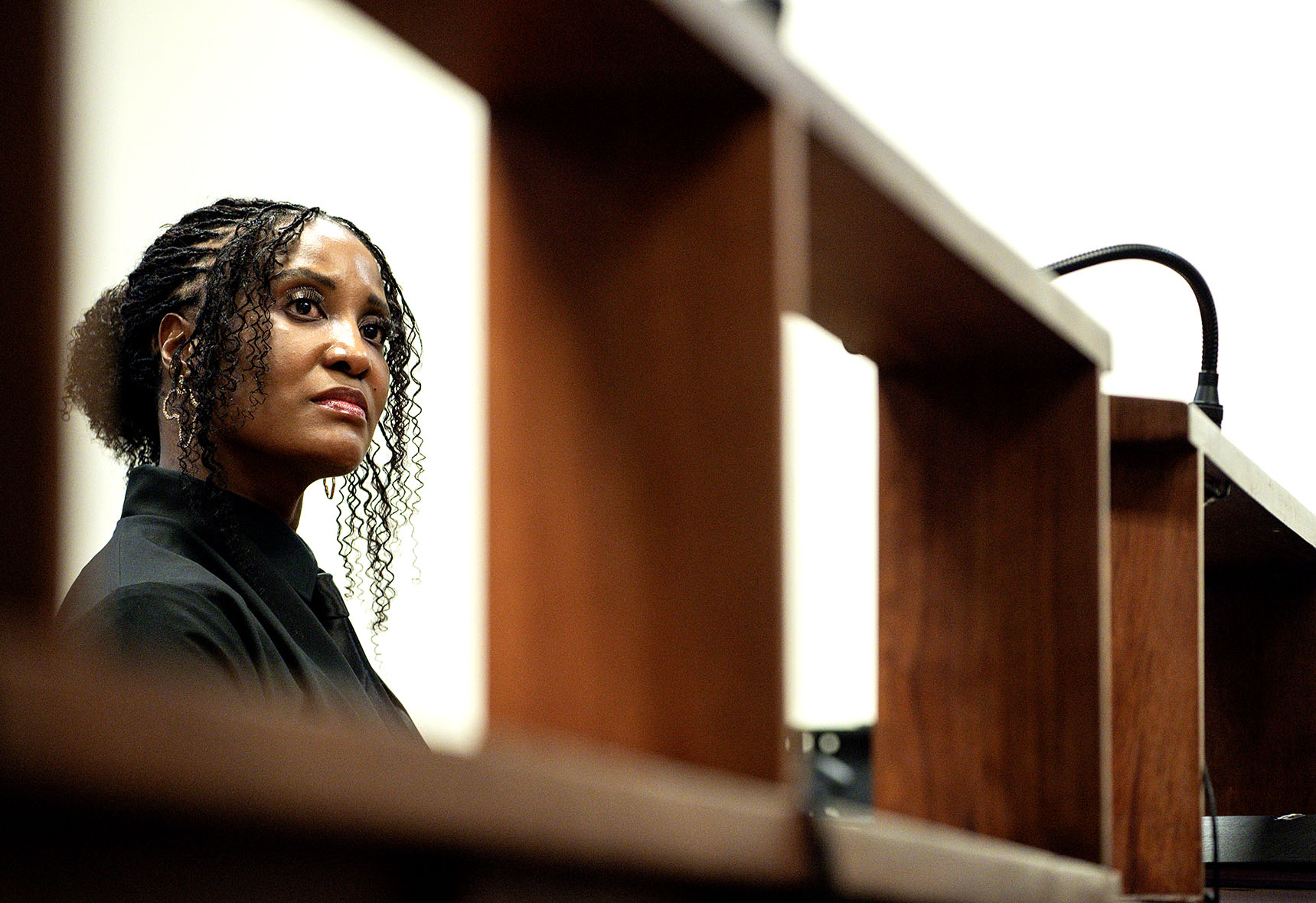Social media expert and State witness Emma Sadleir has told the KwaZulu-Natal Division of the High Court in Durban that she recommended Duduzile Zuma-Sambudla face four criminal charges for her social media posts during the deadly July 2021 unrest.
This, Sadleir said, was because Zuma-Sambudla “celebrated” acts of violence that erupted in KwaZulu-Natal and Gauteng – looting, road blockages, arson and other criminal activity that left more than 350 people dead and caused economic losses exceeding R50-billion.
Sadleir made the remarks during her evidence-in-chief and cross-examination over the past two days.
“The tweets were a call for action to stir up violence. She also celebrated the SA that was on its knees. Her tweets instigated violence in collaboration with others committing similar acts. I recommended to the police four charges, which were incitement to terrorism, incitement to public violence, sedition and the violation of the Cybercrimes Act,” Sadleir said.
/file/attachments/2984/pic_651429_b024a935fef95258f5a964446a538162_1_753610_1_837842.jpg)
Although she recommended four charges, the State charged Zuma-Sambudla with two: incitement to terrorism and incitement to public violence.
Read more: Zuma-Sambudla’s tweets ‘contributed’ to July 2021 riots, court told
At the centre of the case are dozens of posts, mostly with videos that Zuma-Sambudla posted on X, many with the phrases “we see you” and “I see you” – wording whose literal meaning has been debated since the trial began.
The tweets were not exclusive to her Twitter feed, but were also shared across WhatsApp groups, some believed to include other instigators of the violence, who used them to coordinate the uprising.
‘Obvious incitement’
In her report, which has been submitted as evidence before the court, Sadleir said she found there was obvious organisation, orchestration, incitement and coordination of public violence and unrest in the WhatsApp groups.
The court has also been told of two other videos, which were not initially submitted as evidence because Sadleir said they had been removed from Zuma-Sambudla’s account, but were widely reported on.
However, while preparing to give evidence this week, Sadleir said she conducted a reverse image search and had been able to locate them.
One of the tweets contains a video in which an ANC election poster, featuring the face of President Cyril Ramaphosa, is being shot at six times.
Advocate Dali Mpofu, for Zuma-Sambudla, initially objected to questions on this specific video as he said it was fresh evidence and an ambush on the defence, specifically as all evidence and files had been shared as early as March this year. Mpofu said it could change the entire direction of the case.
This specific tweet was posted in January, the same month Zuma-Sambudla was arrested and later released on bail.
“It’s the right of the accused to know what case she has to fight. The accused is anxious to have this finalised, so it’s not a trivial matter. This whole case could turn on this video,” Mpofu said.
After some back and forth between the State and defence, the court ultimately decided the video should be submitted as part of the evidence, with arguments on its admissibility set to take place later.
‘Most violent day…’
The other tweet in question refers to a video of burning goods, which Zuma-Sambudla posted on 9 July 2021, which Sadleir described as the “most violent day in democratic history”.
In the said video, Zuma-Sambudla wrote: “Gauteng! Mpumulanga! Free State! Are you there?”
Giving her interpretation of the tweet, Sadleir said: “She was saying we have caused this destruction, where are the other provinces, are you awake?”
During cross-examination, Sadleir seemed to shift her position on the video of the ANC poster. While she initially told the court that the shots targeted Ramaphosa’s face, she later acknowledged that the gunfire was simply directed at the poster as a whole.
/file/attachments/2984/ED_455059_1_418165.jpg)
Mpofu also spent a considerable amount of time questioning whether Sadleir was a State witness or an expert witness. Both Mpofu and the judge agreed it was important to make the distinction.
Sadleir explained that although she specialised in social media law, she was not before the court in the capacity of an “expert witness”.
Instead, she was there because of a memorandum she had concluded for a client, being the Hawks, to review Zuma-Sambudla’s online activity during the unrest and to advise whether her conduct warranted criminal consequences.
Part of Sadleir’s evidence has been set aside by the court, with Mpofu having said it must be thrown into the “bin”.
Read more: Duduzile Zuma-Sambudla was on authorities' radar long before July 2021 riots, court hears
On Tuesday, Sadleir told the court that when she monitored Zuma-Sambudla’s X account and completed her report, it had 260,000 followers and had picked up several themes.
“The first and most overwhelming theme was the volume of content posted by the accused in support of her father, former president Jacob Zuma.”
‘Hatred’ of Ramaphosa
Another prolific theme Sadleir observed was Zuma-Sambudla’s hatred of Ramaphosa, as her posts “frequently” depicted him as a curated clown with some posts labelling him “a proxy leader for white monopoly capital and an apartheid figurehead”.
On Wednesday, the court heard of “threats” made by Zuma-Sambudla to visit politicians’ homes, including then KZN Premier Sihle Zikalala.
Mpofu said there was nothing untoward about this and barely a threat, as it was a public building.
“My ultimate recommendation is that there was a case to answer; therefore, the accused should be charged,” Sadleir told the court.
Through Mpofu’s questioning, Sadleir conceded that some of the 28 tweets she analysed showed no explicit violence or incitement to terrorism when viewed in isolation.
Judge Mbuzeni Mathenjwa also asked: “If each of these pictures does not constitute violence, would you, at the end, come to the conclusion that in total they constitute violence?”
Responding to this, she said: “The best answer I can come up with is that not all of these tweets were created equal in terms of what they showed and in terms of the impact they may have had…”
This is particularly important as an earlier witness, fraud examiner Sarah-Jane Trent, who laid the charges against Zuma-Sambudla, also testified that several of the posts contained no violence.
Yet these same tweets and videos remain part of the prosecution’s case aimed at proving that Zuma-Sambudla “intentionally and unlawfully” fuelled public unrest during the July 2021 riots.
The trial continues. DM




 Duduzile Zuma-Sambudla at the high court in Durban. State witness Emma Sadleir said Duduzile Zuma-Sambudla’s tweets ‘were a call for action to stir up violence. She also celebrated the SA that was on its knees’. (Photo: Gallo Images / Darren Stewart)
Duduzile Zuma-Sambudla at the high court in Durban. State witness Emma Sadleir said Duduzile Zuma-Sambudla’s tweets ‘were a call for action to stir up violence. She also celebrated the SA that was on its knees’. (Photo: Gallo Images / Darren Stewart) 